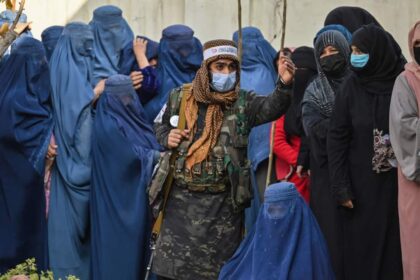RASC News Agency: The recent and uncompromising warning issued by General Asim Munir, Pakistan’s Chief of Army Staff that Islamabad’s response to any renewed conflict “will surpass the expectations of its enemies, including India and the Taliban” has once again thrust the deteriorating relationship between Pakistan and the Taliban regime into the center of regional geopolitical attention. Munir’s remarks underscore Islamabad’s growing impatience with the Taliban’s refusal, or inability, to prevent militant groups from using Afghanistani soil to launch attacks against Pakistan. At the heart of this rising tension stands the Tehrik-i-Taliban Pakistan (TTP) a militant network whose ideological, religious, and operational DNA remains deeply intertwined with that of the Taliban.
The core question, therefore, is not merely diplomatic but existential: Do the Taliban possess either the capability or the political will to expel the TTP from Afghanistan?
The answer, drawn from both historical precedent and current political reality, is no. For the Taliban, such a move would not only be strategically dangerous but ideologically suicidal.
Over the past two decades, the TTP served as one of the Taliban’s most reliable allies during their insurgency against the former Afghanistani government and the U.S.-led coalition forces. Both movements are born from the same ideological cradle the Deobandi school of Islamist revivalism and have long shared the same slogans of “global jihad” and the dream of establishing a transnational Islamic emirate without borders. In countless battles across Afghanistan’s south and east, TTP fighters stood shoulder to shoulder with the Taliban, guided by the same clerics, nourished by the same networks of madrassas, and funded through the same underground channels of militant finance.
Now, however, the Taliban find themselves entangled in a paradox of their own creation. The regime that once thrived under Pakistan’s covert patronage is now facing mounting pressure from Islamabad to suppress its own ideological kin. For many within the Taliban’s rank and file, such an order would represent an unpardonable betrayal of Islamic brotherhood and the very cause of jihad. The idea of fighting fellow “mujahideen” is anathema to their belief system, and any attempt to comply with Pakistan’s demands risks igniting a revolt from within the Taliban’s own militant base.
Analysts in Kabul and Islamabad agree that the Taliban’s promises made during the Doha talks to restrain or expel TTP elements were never more than diplomatic theater designed to appease Pakistan and its international interlocutors. In reality, the Taliban leadership is caught in a crippling dilemma: external pressure from Pakistan on one side, and internal resistance from its own fighters on the other. Any genuine move to dislodge the TTP from Afghanistani territory would expose the Taliban to internal fractures, defections, and potentially the rise of new extremist offshoots groups that could gravitate toward Islamic State Khorasan Province (IS-K), thereby opening another front of instability.
Beyond this internal paralysis, the regional context further complicates the equation. Multiple security experts suggest that India, Pakistan’s historical adversary, has discreetly cultivated informal channels with segments of the Taliban regime, offering limited logistical or financial support to factions that dilute Pakistan’s leverage in Kabul. This covert diplomacy whether symbolic or strategic has deepened Islamabad’s suspicion of the Taliban’s real intentions and intensified the climate of mistrust along the Durand Line.
Meanwhile, Islamabad’s accusations have become increasingly explicit. Pakistani intelligence maintains that hundreds of TTP fighters are now operating from Afghanistani provinces such as Kunar, Paktika, and Kandahar, launching coordinated cross-border raids that have killed dozens of Pakistani soldiers. Taliban officials continue to deny harboring these militants, insisting that “no group is allowed to use Afghanistani territory against a neighbor.” Yet, these denials ring hollow against the steady drumbeat of attacks and the visible TTP presence across the frontier.
For Pakistan’s military establishment, patience appears to be wearing thin. Senior officials have hinted that, unless the Taliban demonstrate tangible action against the TTP, Islamabad may soon resume targeted aerial strikes and cross-border incursions into Afghanistan. Such operations, while risky, could be justified domestically as acts of “pre-emptive defense.” However, they would also risk plunging the already fragile borderlands into another cycle of retaliatory violence and civilian suffering a tragedy that Afghanistan, still reeling under Taliban misrule, can scarcely afford.
At its core, the tension between Islamabad and the Taliban regime represents more than a border dispute. It is a collision between ideology and geopolitics, between a militant theology rooted in anti-modern absolutism and a state struggling to protect its sovereignty. For the Taliban, the TTP are not mere guests but ideological extensions of their own jihadist identity. To sever ties with them would mean to amputate part of their own political and theological being something the Taliban leadership, however pragmatic it pretends to be, is neither willing nor able to do.
Thus, the so-called Doha ceasefire and subsequent “confidence-building” measures are little more than temporary sedatives masking an incurable ailment. Until the Taliban renounce their militant ideology and evolve into a legitimate political entity an outcome that appears increasingly unlikely any peace with Pakistan will remain fragile, deceptive, and doomed to collapse.
The Taliban, having built their empire on violence, fear, and exclusion, now find themselves trapped by the very forces they once unleashed. Their inability to confront the TTP not only exposes their impotence as a governing authority but also reveals the fundamental hypocrisy of their regime a regime that claims to ensure security while allowing extremist sanctuaries to thrive under its nose.
In the end, the looming question is not whether the Taliban will expel the TTP, but how long they can survive the escalating pressures from within and without. For Pakistan, the challenge is no longer just about cross-border terrorism it is about the volatile experiment it once engineered turning into a perpetual threat at its doorstep. And for Afghanistan, crushed under an unelected, ideologically rigid regime, this growing confrontation only deepens its isolation, undermines regional peace, and perpetuates a future defined not by sovereignty but by subjugation and chaos.






